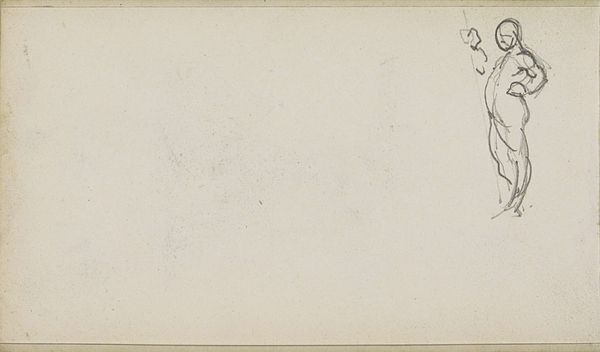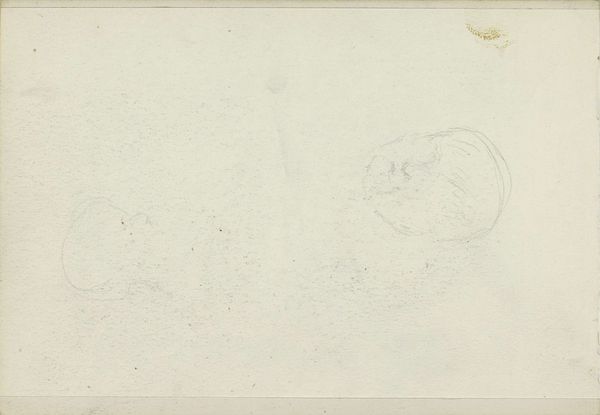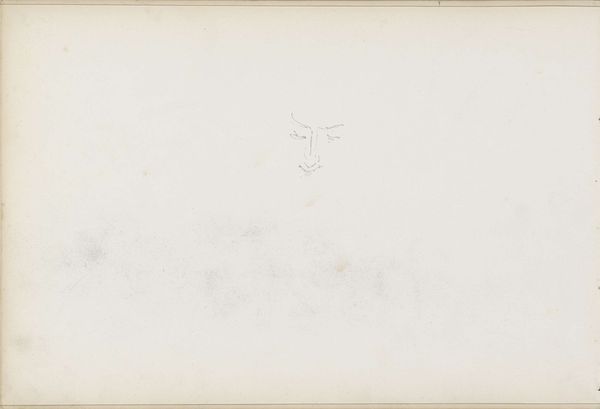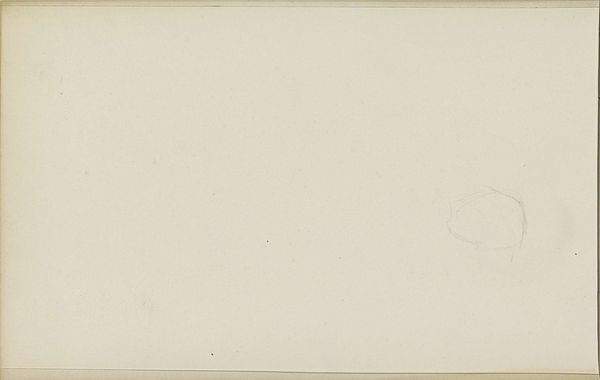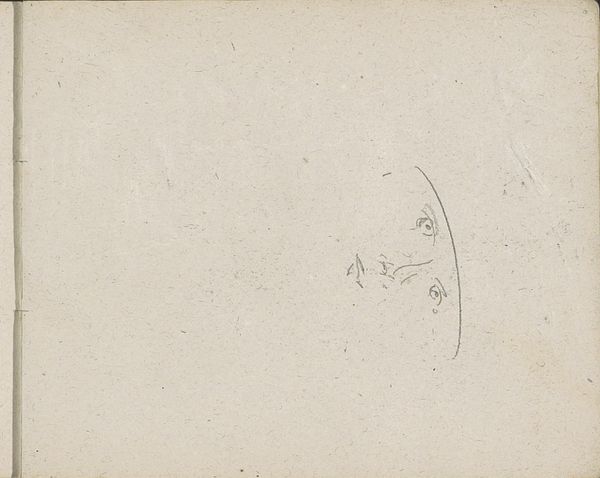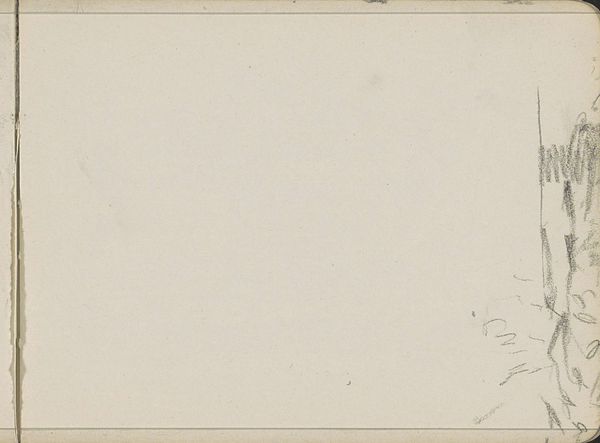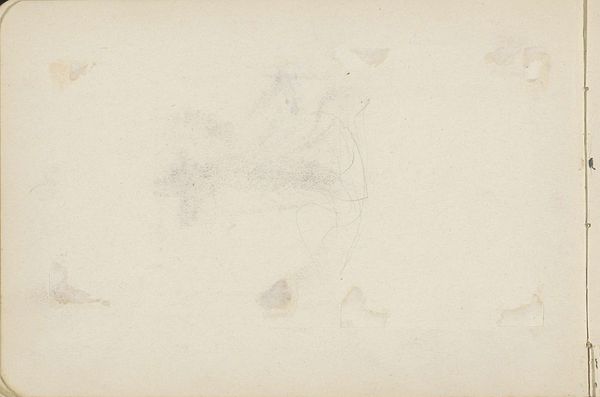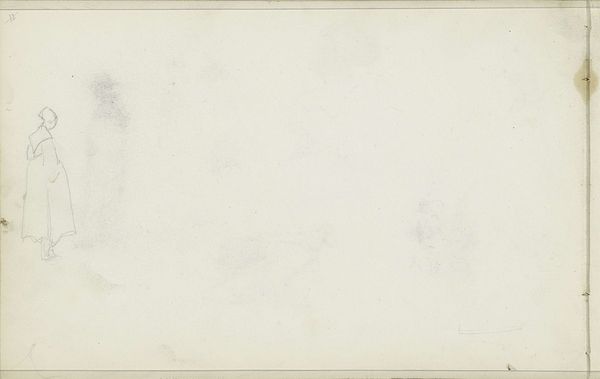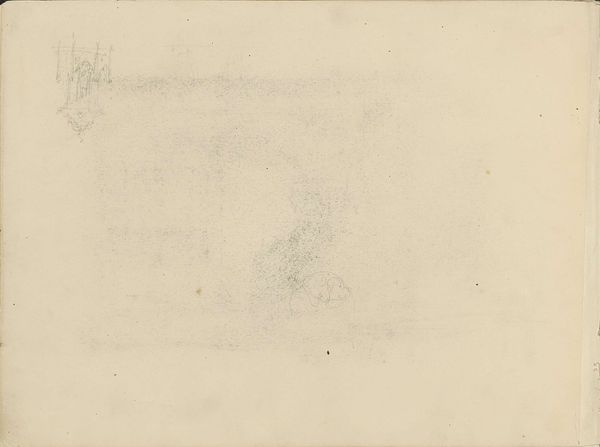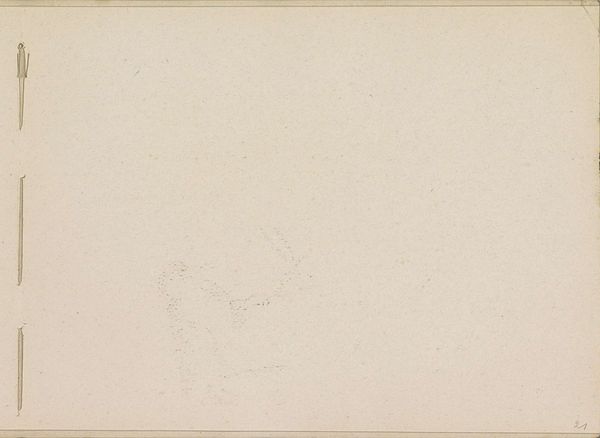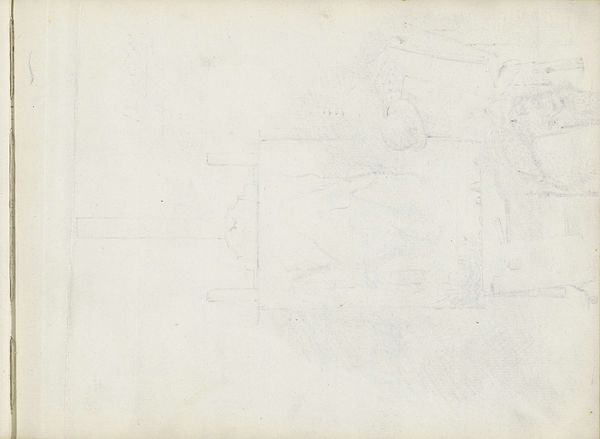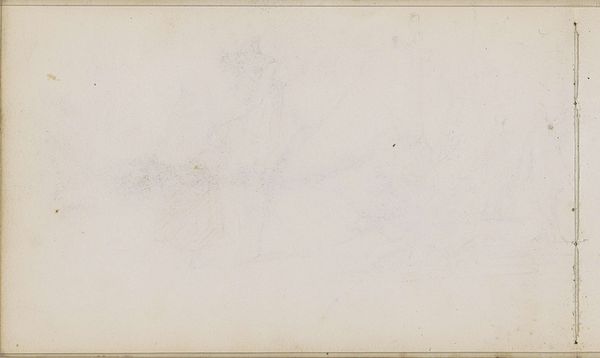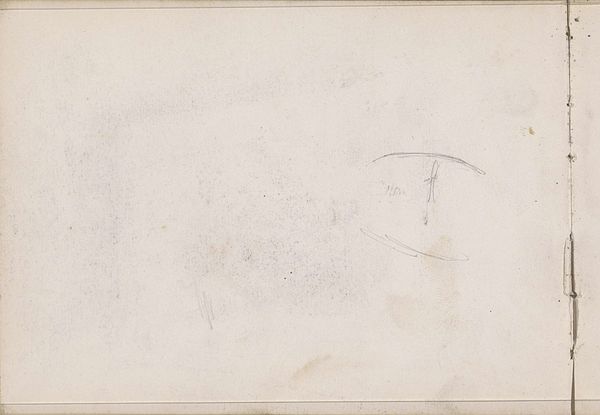
drawing, paper, ink, pencil
#
portrait
#
drawing
#
light pencil work
#
ink paper printed
#
pencil sketch
#
paper
#
personal sketchbook
#
ink
#
pencil
#
sketchbook drawing
#
sketchbook art
#
modernism
Copyright: Rijks Museum: Open Domain
Curator: So, here we have "Schutblad A", created at some point between 1881 and 1927 by Johan Antonie de Jonge. It appears to be an ink and pencil drawing on paper. My immediate thought is of an institutional document. Editor: It feels almost ghostly, doesn't it? Barely there. I'm drawn to the subtle textures; they speak to me of layers, both physical and perhaps metaphorical. But the minimalism is striking, especially for a portrait. It is certainly very pale and difficult to view on the screen. Curator: The concept of a "Schutblad," or protective sheet, is crucial. It highlights the work's function, literally shielding other drawings in a sketchbook. How can we reimagine these sketches within a political framework? Where could such sketches originate in that late 19th-early 20th century framework? Editor: The lack of any distinct, dominant portrait means we must ask ourselves what isn't present. We are looking at traces. What could that negative space signify given this historical context? Perhaps, the void symbolizes erasure or silencing within societal structures of the time. Whose voices are absent? Who benefits from this emptiness? The page stamp certainly has a story of institutionalization in it, and maybe the silence comes through heavy bureaucracy? Curator: I wonder what role it played for the artist? In those times, art became enmeshed with social identity, often defining who was represented and who was ignored. A work like this prompts one to consider, were marginalized figures protected, or were they concealed under the guise of neutrality, mirroring this Schutblad's very nature? The choice of such an item prompts a consideration of access too – perhaps that influenced who could sketch in the first place, as sketches often formed the basis for later art pieces. Editor: That’s a very good question and indeed, it demands we probe beyond mere aesthetics, to unearth its complex story of silence and historical identity. Thinking about what protection looks like during this time can make us aware of all those left unprotected too. Curator: I appreciate your thoughts – viewing this work as more than just a minimalist image certainly provides great depth to its impact. Editor: Exactly! This perspective has changed how I engage with what appears as nothing at first glance. Now it makes me wonder how all "blank canvases" come into being!
Comments
No comments
Be the first to comment and join the conversation on the ultimate creative platform.
